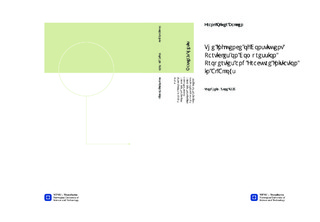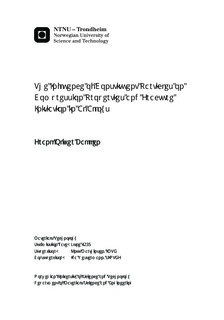| dc.description.abstract | In the present work an AlMgSi alloy, with a small amount of Fe has been investigated. The objective was to study how the thermomechanical processing influences the mechanical properties in compression, dependent on grain structure, texture and artificial aging. The materials were subsequent to compression investigated to determine the tendency to pore formation and ductile fracture initiation.The initial microstructure of the AlMgSi alloy was characterized with respect to grain structure, texture and constituent patricles for three different conditions; i) as-cast condition, ii) extruded condition, and iii) extruded, cold-rolled, and recrystallized condition (including an extruded and cold-rolled condition, which was used only for the characterization of the initial microstructures). The conditions were analyzed with both OM (optical microscopy) and SEM (scanning electron microscopy) before they were artificially aged at 175°C to three different tempers; under-aged temper (2 hours), peak-aged temper (8 hours), and over-aged temper (11 days). Then mechanical properties for the different conditions/tempers were tested in an upsetting test. Finally, the microstructure of compressed conditions in the over-aged temper was characterized with both OM and SEM to look at the microstructural changes due to the deformation introduced during compression.The characterization of the initial microstructure of the alloy in different conditions proved that the microstructure is strongly dependent on the thermomechanical processing. The upsetting test showed that the ageing time is very influential on the stress-strain behavior. The alloy shows a characteristic stress-strain behavior for each of the three different tempers. The different stress-strain response like the flow stress and work-hardening rate can be explained by the precipitates obtained from artificial ageing. The precipitate size, density and type and whether they are shearable or non-shearable are largely dependent on the ageing time. The alloy has highest strength at high strain in the peak-aged temper and the lowest in the over-aged temper. The condition of the alloy also affects the stress-strain behavior, but not to the same extent as the temper. The influence of the condition on the stress-strain behavior can be explained by the fact that the precipitation kinetics may be different dependent on the history of the material, or because the precipitate structure is different (different type, density, and size), but it may also be because of different textures.The characterization of the compressed microstructures (only the over-aged samples) revealed that shear bands have been formed during the upsetting test. The shear band formation is much more pronounced in the extruded condition compared to the other conditions in the same temper, which has lead to a much more non-uniform deformation in the grain structure. However, the over-aged extruded condition also showed the most symmetric macroscopic deformation during the compression compared to the other conditions in the same temper. This may be explained by the recrystallization texture present in the extruded condition.The characterization of the compressed microstructure also revealed pore formation in the over-aged as-cast condition and in the over-aged extruded, cold-rolled, and recrystallized condition, but not in the over-aged extruded condition. This can be explained by the fact that the cohesion between the particles and the surrounding matrix is much better in the extruded condition because the extrusion process have been performed at elevated temperatures (500-550°C). Based on the fact that the extruded condition exhibit a much more symmetric macroscopic deformation during compression, and that no pore formation have been formed after the compression it may seem as though the AlMgSi alloy exhibit the best compression properties and is less prone to pore formation and ductile fracture initiation in the extruded condition | nb_NO |

